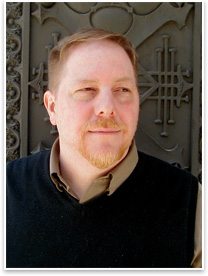 Douglas Boldt, AIA Douglas Boldt, AIA
by Heather Livingston
Contributing Editor
Summary: Doug Boldt, AIA, is an architect with Chicago-based LCM Architects, LLC, a design firm that specializes in health-care, corporate, research and production, and academic facilities. For 20 years, he has been a proponent of fractal architecture, or fractalism. Though infrequently recognized as such, fractal architecture currently is popping up all over the world. Here are his thoughts on the subject.
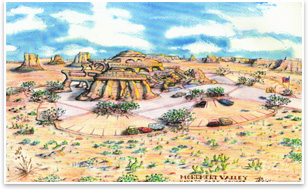 Education Education
I have a BS in architecture from University of Illinois, Urbana-Champaign.
Current read
I like to read a lot of fiction, so I’m currently reading Ivanhoe by Sir Walter Scott.
How would you describe your work?
The kind of work I do on a daily basis is pretty straightforward architecture. We do a lot of educational university work and health-care work. It’s a lot of renovation and project management.
Who has inspired you?
I’m a big Bruce Goff fan. I think that’s certainly one example. I really love Gaudi from Spain. Of course Frank Lloyd Wright was an influence. I guess all of those architects who have more of an organic style to their architecture.
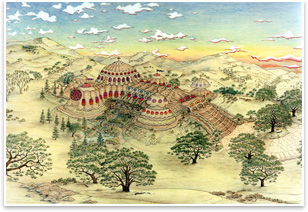 How did you become interested in fractalism? How did you become interested in fractalism?
Well I first heard about it when I moved to California. I lived and worked there for the first 15 years of my career, and I read about fractals in articles. I certainly didn’t read about fractal architecture. Nobody had made that connection, I don’t think, especially back then. I first started to be interested in that stuff in 1986, but I immediately saw the application to architecture. There was nobody writing about it at that time or, if they were, it was really silly applications. I remember there was one installation I saw in an article where somebody made a little model of a plain old framed gabled house and then put a smaller house inside of that and a smaller house inside that and that was fractal architecture. It was silly. In recent years some people have written about it and used the term “fractal architecture,” but I don’t think it’s widely understood yet. I should say it’s not understood in text but there are plenty of examples out there right now in the built world.
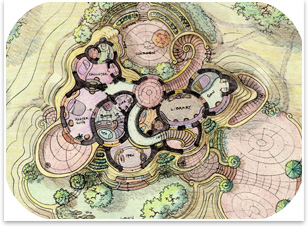 Such as? Such as?
Well, if you look at the current edition of any architecture magazine, the pages are full of it. For instance, the August issue of Architectural Record that has the Beijing Olympic Stadium, Herzog & De Meuron’s Bird’s Nest. That building is extremely fractal. Even the name is fractal.
And, CSCEC’s swimming pavilion has a very fractal envelope skin that’s very energy efficient. I don’t particularly like the shape of the building. They chose to use that beautiful structure envelope but shaped into what looks to me like an old fashioned Modern box. But I do love the envelope. So there are two examples that are fractal: one building is very fractal and the other one has a fractal envelope.
How does fractal architecture respond to sustainability?
Well, that’s a good question. There’s been a lot of talk about sustainability and LEED® and the environment, which is a good thing because this planet is in trouble, these are necessary steps, and I’m glad for the progress that we’ve made. But sustainability doesn’t address the shape of things; how things look. More basically, it doesn’t address the geometry of a building, and that’s what fractalism does. It is looking at the actual geometry of buildings, which is something that we’ve taken for granted. Nobody ever talks about the geometry of a building. At least when I went to school it was taken for granted that that shape was Euclidian. We were talking about squares, circles, triangles, pyramids, all the classic Euclidian shapes.
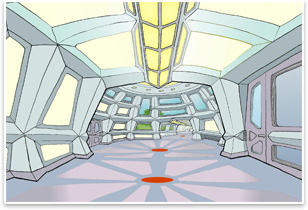 I think fractalism is the shape of all these great, new environmental movements. It addresses the more basic notion of the shape of a building, how a building is formed. If we use the principles of fractalism, you will shape the building to be the most efficient so it’s not just the materials that you use but how its shape addresses the wind and the rain and all the forces of the site. I know that’s not particularly a new notion. We’ve been talking about that for quite some time—that a building should complement its site—but the notion that’s new is to look at fractal architecture as an attitude. You look at examples in nature and you come up with solutions from nature and some of those are shapes and some of those are ideas for more efficient designs, so that’s how it fits into sustainability, I would say. I think fractalism is the shape of all these great, new environmental movements. It addresses the more basic notion of the shape of a building, how a building is formed. If we use the principles of fractalism, you will shape the building to be the most efficient so it’s not just the materials that you use but how its shape addresses the wind and the rain and all the forces of the site. I know that’s not particularly a new notion. We’ve been talking about that for quite some time—that a building should complement its site—but the notion that’s new is to look at fractal architecture as an attitude. You look at examples in nature and you come up with solutions from nature and some of those are shapes and some of those are ideas for more efficient designs, so that’s how it fits into sustainability, I would say.
What would be your dream project?
I would love to build my own house. I guess that would be a dream. I also would love to build a park headquarters. When I was out in California, I was blown away by all the natural architecture. I was highly inspired at Monument Valley by the buttes and the mesas, so I designed a park center that would reflect the rocks and the natural geography of the place.
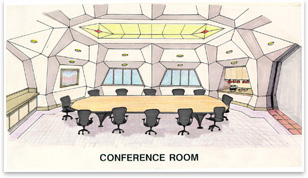 Benoît Mandelbrot, who coined the term, said that fractals are the geometry of nature, so it’s not just organic nature or living cells or creatures or plants. It’s everything in nature including the clouds, the mountains, the rocks. Certainly any organic architecture would also be fractal architecture, but fractal architecture is not limited to organic substances or structures. Benoît Mandelbrot, who coined the term, said that fractals are the geometry of nature, so it’s not just organic nature or living cells or creatures or plants. It’s everything in nature including the clouds, the mountains, the rocks. Certainly any organic architecture would also be fractal architecture, but fractal architecture is not limited to organic substances or structures.
What advice would you give to young architects?
I would like young architects and old architects to recognize that we’re heading into a new age and that Modernism is behind us. We need to put the “arc” back in architecture. There’s a presumption out there that squares and rectangles and boxes are the most efficient and most economical shapes, and I’d like to prove it’s not true. The post and lintel that those structures are based on is a very weak structure, so it means the most material for the least amount of volume. Nature mostly uses arcs and shell structures and tube structures and various other structures and for a reason. Nature doesn’t typically use a post and lintel. |

 Douglas Boldt, AIA
Douglas Boldt, AIA

 Education
Education How did you become interested in fractalism?
How did you become interested in fractalism? Such as?
Such as? I think fractalism is the shape of all these great, new environmental movements. It addresses the more basic notion of the shape of a building, how a building is formed. If we use the principles of fractalism, you will shape the building to be the most efficient so it’s not just the materials that you use but how its shape addresses the wind and the rain and all the forces of the site. I know that’s not particularly a new notion. We’ve been talking about that for quite some time—that a building should complement its site—but the notion that’s new is to look at fractal architecture as an attitude. You look at examples in nature and you come up with solutions from nature and some of those are shapes and some of those are ideas for more efficient designs, so that’s how it fits into sustainability, I would say.
I think fractalism is the shape of all these great, new environmental movements. It addresses the more basic notion of the shape of a building, how a building is formed. If we use the principles of fractalism, you will shape the building to be the most efficient so it’s not just the materials that you use but how its shape addresses the wind and the rain and all the forces of the site. I know that’s not particularly a new notion. We’ve been talking about that for quite some time—that a building should complement its site—but the notion that’s new is to look at fractal architecture as an attitude. You look at examples in nature and you come up with solutions from nature and some of those are shapes and some of those are ideas for more efficient designs, so that’s how it fits into sustainability, I would say. Benoît Mandelbrot, who coined the term, said that fractals are the geometry of nature, so it’s not just organic nature or living cells or creatures or plants. It’s everything in nature including the clouds, the mountains, the rocks. Certainly any organic architecture would also be fractal architecture, but fractal architecture is not limited to organic substances or structures.
Benoît Mandelbrot, who coined the term, said that fractals are the geometry of nature, so it’s not just organic nature or living cells or creatures or plants. It’s everything in nature including the clouds, the mountains, the rocks. Certainly any organic architecture would also be fractal architecture, but fractal architecture is not limited to organic substances or structures.